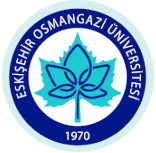ULTRAVIOLET-VISIBLE LIGHT SPECTROPHOTOMETER (UV-VIS-NIR)
UV-VIS spectroscopy is a method commonly used in the identification of organic molecules, ions or complexes, including the wavelength range, including ultraviolet and visible light regions. The basis of this method is based on the increase in absorption (absorption) due to a decrease in the intensity of the beam after a beam is passed through a sample or reflected from a surface of a sample. Since the rays passing through or reflected from the sample are absorbed by each molecule with a specific wavelength, the molecular spectra can be determined by reference spectra.
The UV-VIS-NIR spectrophotometer within the ARUM includes the near-infrared (NIR) region along with the ultraviolet and visible light regions as the wavelength range and offers a much wider spectrum of analysis. Temperature-dependent tests (up to 60 ° C) can be realized with the integrated temperature accessories. In addition to this, solid state samples can be analyzed as well as liquid samples. UV-VIS-NIR spectrophotometry is the basis of choice in both academic and industrial fields and includes water, environment, medicine, chemistry, biology, biochemistry etc. indispensable in areas.
UV-VIS-NIR Device: Perkin Elmer Lambda 750 (Dual Beam)
Wavelength Range: 2500 - 190 nm
Information to be Obtained by UV-VIS-NIR Analysis;
- Determination of molecular formula
- Chemical reaction monitoring,
- Follow-up of reaction kinetics,
- Temperature dependent reaction monitoring,
- Turbidimetric studies.

